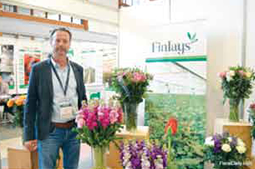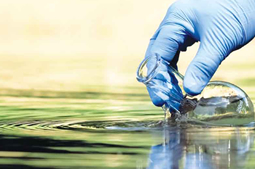Finlays shut down their farms, Chemirei and Tarakwet, in Kericho (Kenya) on 25th December. However, they will continue to expand their Lemotit farm in Londiani, and they will double the size of their packhouse. But what is the reason for the closedown of the Kericho Farm? What will happen with the employees and how will they continue? We had a chat with Piet Kelderman, Commercial Manager of Finlay Flowers who explained it all.
 The shutdown – costs too high
The shutdown – costs too high
In April 2018 Finlay Flowers announced that it would be closing its operations in Kericho over a three year phased program. Recently, the company decided to accelerate the closure and brought the date forward by twelve months. But what was the reason for this decision? “The costs”, says Kelderman, “Specifically around labour. When Finlay Flowers started in Kericho in 1989, its labour costs were aligned with the tea industry and it remains like this to this day. The salaries are higher – approximately twice as high as the rest of the flower industry in Kenya and this has made the farms in Kericho uncompetitive.”

 When we moved in, the first thing we had to do is was to clear the bushes and flatten some of the termite hills. We had to design an inroad and gravel it. Getting labour from within was a problem as the locals would prefer to work for a half day in the neighbouring small scale farms than to work the whole day in the flower farm. Getting outside labour was also a problem as the farm is in an isolated place and no housing around. We have since overcome these problems and the farm is now running smoothly.
When we moved in, the first thing we had to do is was to clear the bushes and flatten some of the termite hills. We had to design an inroad and gravel it. Getting labour from within was a problem as the locals would prefer to work for a half day in the neighbouring small scale farms than to work the whole day in the flower farm. Getting outside labour was also a problem as the farm is in an isolated place and no housing around. We have since overcome these problems and the farm is now running smoothly. Irrigation in greenhouses can be a major challenge for some managers because water supply and water quality can considerably affect the success of the crop. However, regular water analysis is not always a common practice in many greenhouses.
Irrigation in greenhouses can be a major challenge for some managers because water supply and water quality can considerably affect the success of the crop. However, regular water analysis is not always a common practice in many greenhouses. Hopes by Kenya’s flower growers to exploit the lucrative United States market and stop dependence on the European market has not borne much fruit despite the recent launch of direct flights between Nairobi and New York.
Hopes by Kenya’s flower growers to exploit the lucrative United States market and stop dependence on the European market has not borne much fruit despite the recent launch of direct flights between Nairobi and New York. For more than 200 years, the heart of the global trade in cut flowers has been the Netherlands. The world’s largest global auction for flowers began, famously, in a pub. One trader turned to his peers and asked, how much?
For more than 200 years, the heart of the global trade in cut flowers has been the Netherlands. The world’s largest global auction for flowers began, famously, in a pub. One trader turned to his peers and asked, how much?